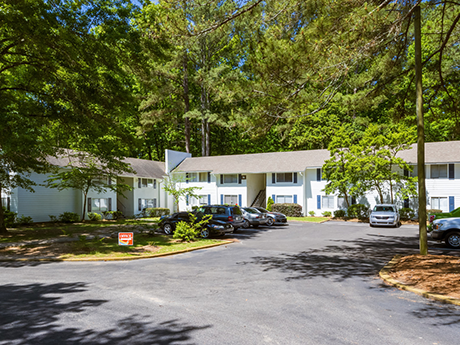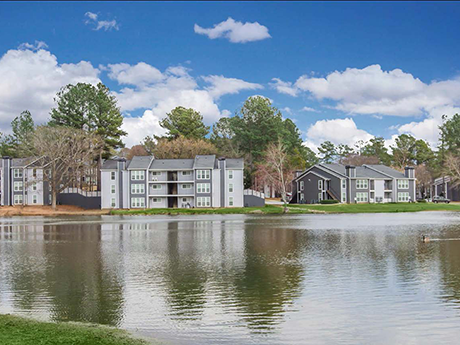By Steve Firestone, Crown Bay Group
Why would anyone choose investing in an aging workforce housing property over razing it to make room for Class A apartments? Are these challenging properties worth the risk? Making this choice may not be right for everyone, but the returns can be unbelievably rewarding.
The secret recipe for transforming Class B and C properties to benefit the community, local residents and your bottom line isn’t complicated. The key is entering into each deal with a genuine interest and desire to do what is right and what matters to the residents who call this property home. The age-old saying — by doing good, you will do well — still holds true today.

Steve Firestone,
Crown Bay Group
There is an overwhelming demand for Class B and C assets. While a large portion of new development over the past decade has been Class A luxury, the Class A market makes up only 20 percent of the total rental market. New construction of affordable, market-rate units is just not financially feasible today. Consequently, meaningful workforce supply has rarely been added this past decade. Despite the pervasive need for workforce housing, the supply has decreased with older units being demolished to make room for Class A construction.
Government subsidies have helped fund the development of some types of low-income housing with the assistance of Low-Income Housing Tax Credit (LIHTC) equity. Oftentimes, however, essential workers earn too much to qualify to rent those properties while still not being able to afford Class A property rentals. Market-rate workforce housing is critical to ensuring access to housing for essential workers in construction, healthcare, transportation, government, education, nursing and public safety.
Unlike government-subsidized developments, market rate workforce housing receives no construction subsidies and is not subject to the same qualifying factors for renters, such as having to earn a certain percentage of area median income. These properties generally include Class B and C assets and are comprised of mostly older communities with limited amenities and basic interior finishes. They are typically located in suburban areas, with low-rise or garden-style construction and rents that are affordable for lower-middle and middle-income families.
Strive for Quality
The critical need for workforce housing needs to be met by safe, well-managed, well-maintained options. Delinquencies, crime, disrepair and poor management are common hurdles to overcome in creating desirable workforce housing communities.
A well-developed business plan with an appropriate allocation of funding for property improvements is imperative to successfully navigating the most common challenges of Class B and C properties. An in-house property management team further ensures the improvement of the standard of living at the community. Engaged, consistent on-site management not only creates a successful property, it also creates a successful investment.
A critical area for improvement is customer service. A leak, a broken stove or refrigerator, or having your heat stop working in the middle of winter can be a real disaster for renters as well as landlords. Slow repair service is often the number-one complaint by tenants. By adopting a strict 24-hour response policy, management teams are motivated to ensure repairs are quickly addressed and tenant needs are well managed.
Sometimes it’s the little things that matter most to how tenants value a property. Updated playgrounds, dedicated barbecue areas, repaired potholes and returning swimming pools to service are just a few of the steps that can increase community satisfaction and add value to properties.
The net result? A higher standard of living begets a higher standard of behavior. Modest updates contribute to significant improvements in the living environment. Tenants feel valued and work harder to pay rent on time, turnover is reduced and there is the potential for an uptick in renter referrals.
Safety is also a huge concern for tenants. From car break-ins to gang activity, safety infractions erode goodwill and a sense of security in the community. Improving lighting and ensuring entry gates function properly are helpful remedies, as is taking a zero-tolerance approach to problematic occupants. Establishing partnerships with local authorities and hiring off-duty officers to patrol properties can significantly curb or eradicate criminal activity.
During the height of the pandemic, there was increasing concern over how eviction moratoriums would impact the bottom line of Class B and C assets. While many of these properties experienced delinquency in rent payments, well-maintained properties with management teams that were committed to residents experienced little variation with monthly collections in comparison to pre-COVID conditions. Successful property management teams assisted tenants in finding nonprofits to provide rent subsidies, completing forms to receive stimulus funds and identifying ways to stay current on their rent.

Crown Bay Group acquired the 93-unit Pines of Southlake, in Morrow, Ga., in 2020.
Financial Benefit
Investments in these types of properties can earn significantly above-average ROI. This is not only through passive, quarterly distributions, but also end-of-cycle returns upon the sale of the property. By improving the property and elevating the caliber of renters, and with proper care and efficient management, above-average returns are possible.
There is an art to making workforce housing a lucrative investment. The secret recipe? A sincere commitment to doing good by these communities, coupled with a well-funded development plan. Together, these can generate tremendous rewards to both the overall wellbeing of residents as well as investors’ portfolios.
— Steve Firestone is CEO of Atlanta-based real estate investment firm Crown Bay Group. The company specializes in the turnaround of distressed properties and re-positions.


